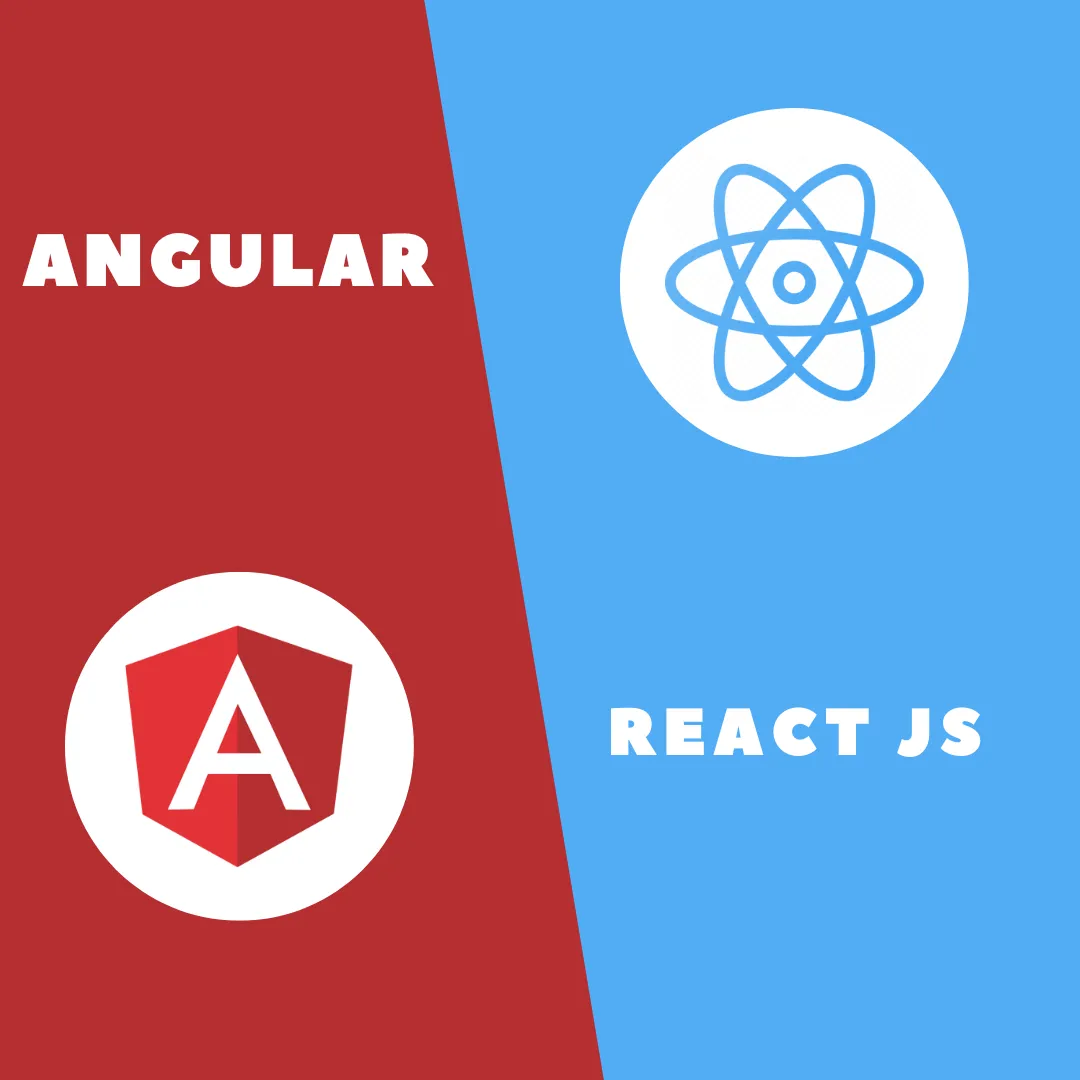In the ever-changing world of web development, two JavaScript frameworks stand out as the top alternatives for creating sophisticated, single-page applications: Angular and React.js. Both have distinct features and capabilities, making them popular among developers worldwide. In this blog article, we will examine the architecture, features, performance, learning curve, community support, and popularity of Angular and React.js. By the conclusion, you will have a thorough grasp of the strengths of each framework, allowing you to make an informed selection for your web development projects
In this blog post, we’ll provide a comparison between Angular and React.js . We’ll cover the following topics:
- Architecture: Angular’s All-in-One vs. React.js’s Lean Approach
- Features: A Balancing Act
- Performance: An Efficiency Showdown
- Learning Curve: Complexity vs. Simplicity
- Community Support: An Abundance of Resources
- Popularity: The Tale of Two Frameworks
- Conclusion:
-
1.Architecture: Angular’s All-in-One vs. React.js’s Lean Approach
Angular is a full-fledged framework that includes all the tools needed to develop sophisticated apps straight out of the box. It adheres to a component-based design, which uses building elements known as components to form the user interface. Because of its modularity, Angular is extremely maintained and testable, which contributes to improved code structure and scalability.
As a JavaScript library, React.js, on the other hand, takes a simpler approach. It focuses largely on the user interface (UI) layer, optimizing rendering performance via a virtual DOM. While React.js has less built-in functionality than Angular, it allows developers to use third-party libraries for tasks like routing, state management, and dependency injection.
-
2. Features: A Balancing Act
Both Angular and React.js have a slew of capabilities that meet the needs of current web developers. As a full-fledged framework, Angular offers crucial functions like routing, state management, and dependency injection as part of its ecosystem. These built-in features streamline development and assure project uniformity.
React.js, on the other hand, adopts a more flexible approach, offering only the necessities while keeping the core library lightweight. Third-party libraries for routing (e.g., React Router) or state management (e.g., Redux) may be readily included by developers based on project requirements. This method allows developers greater flexibility over the project’s structure, but it needs more setup than Angular.
-
3. Performance: An Efficiency Showdown
When it comes to performance, both Angular and React.js perform admirably. React.js, on the other hand, has an advantage due to its virtual DOM method. React.js effectively updates just the essential components when changes occur by retaining a lightweight copy of the actual DOM, avoiding needless re-renders, and improving overall efficiency.
Angular’s two-way data binding approach, on the other hand, while strong, can occasionally result in more frequent DOM modifications, possibly hurting performance in more complicated applications. Despite this, Angular’s speed remains commendable, particularly in instances where the framework’s large feature set comes in handy.
-
4. Learning Curve: Complexity vs. Simplicity
Because Angular is more extensive than React.js, the learning curve is higher. Developers who are new to Angular may find it difficult to comprehend the complex principles and follow the comprehensive documentation. The trade-off is a robust and versatile architecture that easily supports large-scale applications.
React.js, on the other hand, is considerably easier to grasp due to its simplicity and succinct documentation. Because of its simplicity, developers may rapidly become productive and design apps without being overwhelmed by a plethora of concepts and functionality.
-
5. Community Support: An Abundance of Resources
Both Angular and React.js have strong and vibrant communities. This means that developers may access a multitude of courses, documentation, and open-source projects to help them learn and solve problems.
Angular, which is supported by Google, has a large corporate following and a well-established community. React.js, created and maintained by Facebook, has a large user base and a vibrant development community. As a result, regardless of the framework used, developers can be confident that they will find plenty of online help.
-
6. Popularity: The Tale of Two Frameworks
Angular has a significant head start in terms of popularity, owing to its early release and support from a corporate behemoth like Google. React.JS, on the other hand, has been swiftly gaining up, because to its lightweight and flexible nature, which appeals to both newbies and seasoned developers.
-
7. Conclusion
Finally, the decision between Angular and React.JS comes down to your unique requirements and tastes. If you are looking for a robust and feature-rich framework to help you develop sophisticated apps, Angular might be a good option. If simplicity, efficiency, and ease of learning are important to you, React.JS could be a better choice.
Experiment with both frameworks and investigate example projects and tutorials accessible online to make the most educated conclusion. Gaining hands-on experience with Angular and React.JS will better equip you to select the framework that best suits your web development needs. Have fun coding!
Thank You for reading a our blog. Follow us on Medium for regular updates


